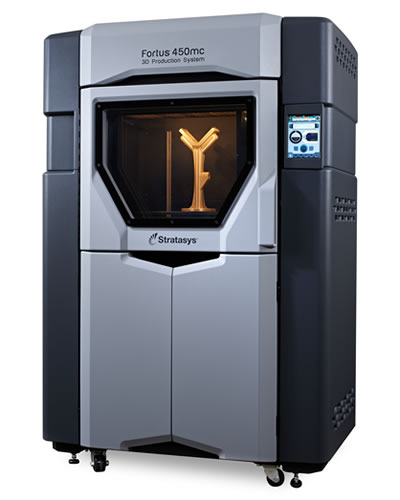Siemens Mobility, the transportation division of German conglomerate Siemens, has installed a Stratasys Fortus 450mc Production 3D Printer at its newly established digital rail maintenance center. Located in Dortmund, Germany the Siemens Mobility RRX Rail Service Center will use additive manufacturing technologies to aid in train maintenance.
“Every train has to go through maintenance several times a year. As you can imagine, all our customers would like this process to be as quick as possible, but they still expect maximum levels of detail, safety, and quality,” said Michael Kuczmik, Head of Additive Manufacturing & Customer Service, Siemens Mobility.
“We also have to consider unplanned or last-minute jobs, and if you look at the different train models and companies we service, this requires a lot of customized solutions. This is where our Fortus 450mc fits in perfectly, providing us the ability to rapidly and cost-effectively produce one-off, customized production parts.”

The RRX Rail Service Center
With a focus on optimizing global transportation systems, Siemens Mobility has previously invested in Stratasys’ FDM 3D printing technology by producing customized final production parts for German transport services provider, Stadtwerke Ulm/Neu Ulm (SWU) Verkehr GmbH. Moreover, the division has partnered with the Roads and Transport Authority (RTA) to provide 3D printed parts for the driverless Dubai Metro.
Now, Siemens Mobility’s flagship site, the RRX Rail Service Center intends to service around 100 trains a month at its facility. Considering this throughput, the division recognized they once again needed new technologies such as additive manufacturing for tooling and spare part replacement – which eliminates the need for physical inventory.
“Bringing together a range of innovative digital technologies, we can significantly increase the efficiency of our customer’s rail operations. Stratasys FDM additive manufacturing plays an integral role, enabling us to optimize spare parts for longer life cycles, at a reduced cost, and in shorter time frames than ever before.” added Kuczmik.

Integrating the Stratasys Fortus 450mc 3D Printer
Before the establishment of its Rail Service Center, Siemens relied on traditional methods such as casting to meet client demands for train maintenance. This process took an estimated six weeks to manufacture a final customized part and was not financially viable, according to Siemens.
However, with the Fortus 450mc, spare production-grade parts can be printed in a matter of hours, reducing manufacturing time by 95%. The designs of these components can also be optimized through rapid prototyping. For example, Siemens Mobility used the 3D printer and industrial-grade ULTEM 9085 thermoplastic to produce a connector tool used to maintain train bogies (the chassis or framework that carries the wheelset). This tool has a complex shape and was known for its difficulty to the manufacturer using traditional methods.
“The ability to 3D print customized tools and spare parts whenever we need them, with no minimum quantity, has transformed our supply chain. We have reduced our dependence on outsourcing tools via suppliers and reduced cost per part, while also opening up more revenue streams by being able to service more low-volume jobs cost-effectively and efficiently,” explained Kucmik.

Searching for new talent or seeking a career change? Search and post 3D Printing Jobs for opportunities and new talent across engineering, marketing, sales and more.
Featured image shows the Siemens Mobility RRX Rail Service Center. Photo via Siemens.


